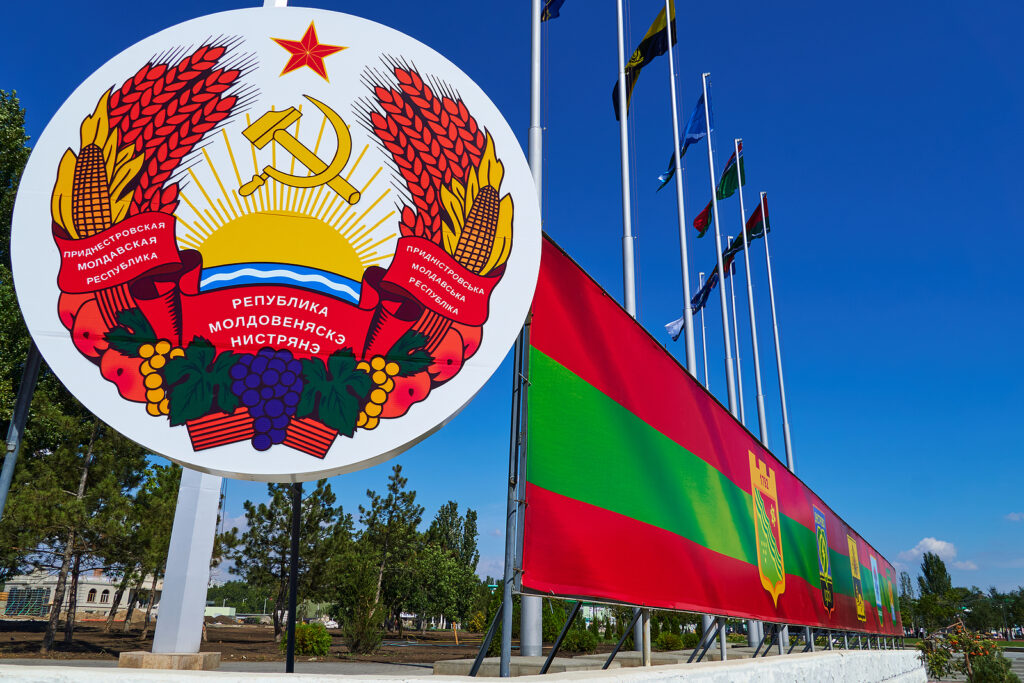It began with a news report in the Moldovan press, citing just one source in the breakaway region of Transnistria (an ‘opposition’ legislator—not that there is much real opposition in Transnistria). The report was quickly amplified by a growing plethora of allegedly ‘in-the-know’ social media accounts that focus on defence issues on NATO’s Eastern Flank—ostensibly run by Romanians but possibly Russian misinformation projects.
The Transnistria region, it was claimed, would on February 28 make a direct appeal to Moscow for incorporation within the Russian Federation, following the Donbas playbook by now familiar to anyone who has been following the war in Ukraine. President Vladimir Putin, due to deliver his annual State of the Nation speech to the Russian parliament on February 29, would immediately oblige, at a stroke creating a Russian outpost sandwiched between western Ukraine and Moldova.
Suddenly, Transnistria—for those who could find it on a map—was back in the global headlines (most international coverage, as David Smith, author of the Moldova Matters newsletter points out, “displayed a shocking level of detachment from not only what is going on in Moldova, but from the actual military capabilities of the Russian Federation”).
Tellingly, however, the government in Moldova’s capital Chișinău was unmoved. “We are watching the situation closely, but there’s no evidence to back up the claims being made [in the media],” the country’s Office for Reintegration said in a statement on February 22.
Unperturbed too were the Ukrainian authorities.
“Nobody will be asking to join the Russian Federation,” said Kirilo Budanov, Ukraine’s military intelligence chief, on February 26. “[The rumours about Transnistria] do not correspond with reality. This has all the hallmarks of a deliberate misinformation campaign designed to destabilise the region.”
He was right. At a special congress on February 28, Transnistria’s Congress of Deputies—a Soviet-style assembly that rarely convenes—instead passed a resolution that merely appealed to Russia to provide Russian nationals in Transnistria with greater “protection” from the Moldovan authorities.
Notably, officials in Tiraspol also appealed to the European Parliament to prevent what it described as pressure from Moldova which was “violating the rights and freedoms” of Transnistrian residents. They made similar appeals to the secretary-general of the United Nations and the International Committee of the Red Cross.
The following day, Putin made no mention whatsoever of the breakaway region in his speech to the Russian duma.
Seeds of conflict
Conflict in Transnistria, home to around 450,000 people, around a third of whom identify as Russians (Romanians and Ukrainians are the other main ethnic groups), has been frozen for more than 30 years, the region largely forgotten or ignored.
Unlike the rest of the Republic of Moldova, populated by a majority of ethnic Romanians, Transnistria was never part of Romania. It was incorporated into the Moldavian Soviet Socialist Republic by the Soviet Union in the 1940s in an attempt to ‘Russify’ the republic.
The present, frozen conflict between the government of then newly-independent Republic of Moldova and the ‘Pridnestrovian Moldavian Republic’, known colloquially as Transnistria, formed by the Russian minority living in the slither of land that sits on the left bank of the Dniester river, began in the autumn of 1991.
The separatists were supported by elements of the Russian (previously Soviet) 14th Army, which had long recruited its forces from the region. Fighting intensified in March 1992 and continued throughout the spring and early summer until a ceasefire was declared in July 1992. It has largely held since then with all sides—until recently—broadly content with the status quo.
The authorities in Tiraspol were happy with their de facto independence despite any international recognition (even Russia, which maintains a small military presence and peacekeeping mission in the territory, does not recognise its independence) that allowed the region to become a hub for contraband, where oligarchs or corrupt political elites in Ukraine, Moldova, and Russia carry out business with few checks and balances on their legality.
Political competition in the territory is limited, and the dominant party is aligned with powerful local business conglomerates (the largest of which, Sheriff, owns petrol stations, a mobile telephony network, supermarkets, construction companies, as well as Moldova’s most successful football team).
Moldova meanwhile made infrequent and half-hearted statements about “reintegrating” Transnistria without showing any real intent. That attitude, however, has seen a significant shift in recent months, with Chișinău increasingly keen to bring Transnistria back onside—at least economically.
Since January 1 it has been levying taxes on goods imported into the region, scrapping an agreement more than 25 years old that had exempted Transnistrian businesses from such duties. Additionally, exporters from Transnistria must now pay customs duties to Moldova. Previously, they paid customs duties to the Transnistrian authorities. Around 70 per cent of Transnistrian exports go to the EU, benefitting from Moldova’s free trade agreement with the bloc.
Chișinău claims that the new rules create “a level playing field” for all businesses on both sides of the Dniester river. Tiraspol claims that they amount to “an economic blockade” that will lead to price increases.
Power struggle
According to Alexandru Flenchea, a former Moldovan Minister for Reintegration, Sheriff is the most likely author of last week’s (non) events.
Speaking on Moldovan television on February 29, Flenchea said that Sheriff had hoped to place so much pressure on Chișinău that it would end its new tax and duty policies.
“Not that the taxes are in themselves the real cause of concern—it’s the precedent, the perspective, he added.
“Chișinău has made it clear that this is a first step towards extending its sovereignty over Transnistria, a step towards economic reintegration. That’s what annoys [Sheriff], because its economic model is not compatible [with reintegration]. It can only continue to make billions as long as Transnistria remains unrecognised, ideally with an open border with Ukraine through which Russian gas, that Transnistria does not pay for, can flow.”
Over the past two years, Moldova has successfully rid itself of Russian gas supplies—before the invasion of Ukraine, it was more dependent on Russian gas than almost any other country in Europe. Nevertheless, it still receives electricity from Transnistria. Russia’s Gazprom supplies gas free-of-charge (through Ukraine) to the Russian-owned Cuciurgan electricity plant in Transnistria, with power then sold to Chișinău—the supply accounts for around 70 per cent of all Moldova’s electricity, while proceeds account for approximately half of Transnistria’s budget. Without them, it would go bust.
With help from the European Investment Bank (EIB), Moldova is currently building a high-voltage line that directly connects its electricity grid with that of Romania, which is scheduled to be ready in 2025. It can’t be completed quickly enough—at the end of 2024, the current agreement covering the transit of Russian gas through Ukraine expires. Kyiv has already said it will not extend it.
Towards the presidential election
Ending reliance on Transnistria for its electricity also ends, at a stroke, the breakaway region’s remaining leverage over Chișinău. With the previously porous Ukrainian border now firmly shut, Transnistria has little option but to move closer to the rest of Moldova. Even if it had asked to become part of Russia, and Russia had obliged, there is little Moscow could have done. It cannot supply the region by air, nor land. Moldova and Ukraine could have ensured that nothing or nobody got in, or out.
Moldova’s shrewd president, Maia Sandu, a former World Bank economist, is aware of this—hence her government’s gentle attempts to begin reintegrating the breakaway region’s economy. The only threat to the plan is a presidential election set for later this year, in which she intends to make Moldova’s European integration the sole focus of her campaign. (Moldovans will simultaneously vote in a referendum asking if they support EU membership—currently polling suggests more than two-thirds do).
Moldova was given the green light to begin EU accession talks in December, having formally applied to join the bloc just days after Russia’s February 2022 invasion of Ukraine.
Russia is likely to interfere. In last year’s local elections, it spent millions of euros on voter bribery and the illegal financing of Moscow-friendly candidates, according to Alexandru Musteață, the head of Moldova’s Information and Security Service.
This year’s presidential election and a parliamentary vote which follows early in 2025 are probably Russia’s last opportunities to restore its waning influence in Moldova. Destabilisation of the country to reorient it away from Europe, which would at once prolong the status quo in Transnistria, are therefore Russia’s goals in 2024.
Unfounded but widespread rumours of annexing the breakaway territory were merely the opening shots of a much longer hybrid war.







